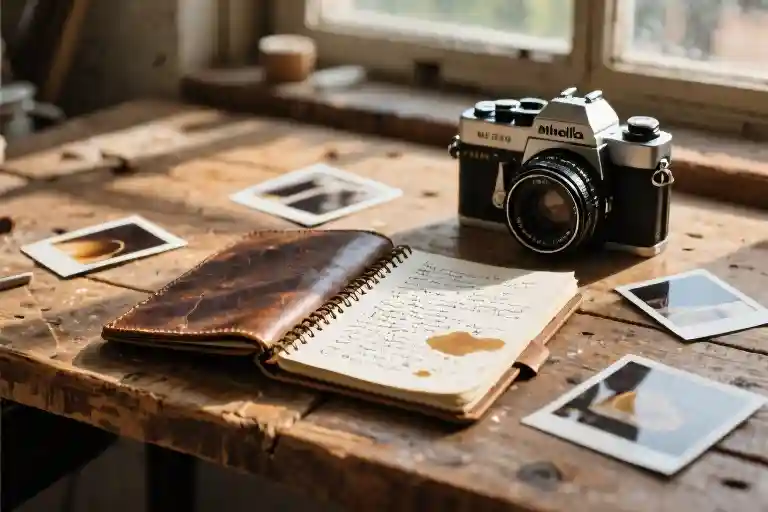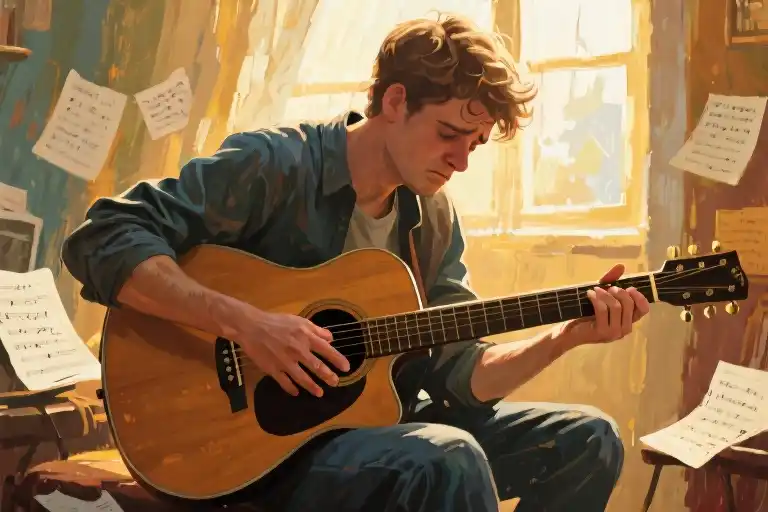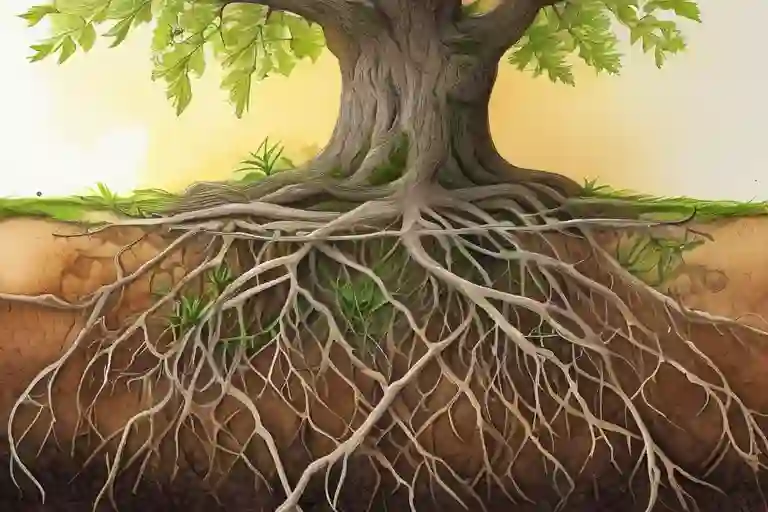The lounge chair creaks slightly as you adjust your position, the smell of sunscreen mixing with the faint chlorine from the nearby pool. Somewhere a grill is firing up for the Fourth of July, but right now there’s just this quiet moment – the kind where long reads find their best audience. I’ve been saving this story, waiting for when we both had the time to really sit with it.
That number – 10,000 hours – probably pinged your radar at some point. Maybe it made you hopeful, or maybe it made you want to throw your camera in a lake. The version we’ve all heard goes something like: put in the time, become a master. But like most things that get simplified for mass consumption, the truth hides in the footnotes of Anders Ericsson’s original research, buried under layers of well-meaning misinterpretation.
What you’re about to read isn’t another repackaging of tired advice. Over the next while, I’ll walk you through what deliberate practice actually looks like when applied to photography – not just the technical drills, but how to sustain creative passion through those inevitable plateaus. We’ll examine the science, sure, but more importantly we’ll trace its application through one very specific journey: mine. From fumbling with a secondhand DSLR to developing what I can now recognize as a personal style, every misstep and breakthrough documented in EXIF data and fading notebooks.
There’s a particular alchemy to artistic growth that raw hours alone can’t explain. Why do some photographers plateau after 2,000 hours while others keep evolving past 20,000? How do you structure practice when creativity refuses to be systematized? And what do you do when the thing that used to make your heart race now feels like just another item on your to-do list?
Grab your drink – the condensation making rings on the side table – and settle in. This isn’t about quick tips or gear talk. It’s about what happens in the space between shutter clicks, about the kind of progress that doesn’t always show up in your Instagram likes. By the time the fireworks start tonight, you’ll have a very different framework for thinking about your own creative development – one that honors both the science of expertise and the messy reality of making art.
The Truth Behind the Numbers
That magic number – 10,000 hours – floats around creative circles like some holy grail of mastery. But here’s what rarely gets mentioned: the original research never actually promised expertise in five figures. Anders Ericsson’s seminal work on deliberate practice, buried under layers of pop psychology interpretation, contains nuances every serious creator should understand.
In his Florida State University lab, Ericsson observed three fundamental pillars of skill acquisition: focused repetition, immediate feedback, and continuous problem-solving. Notice what’s absent? The arbitrary time measurement that later became famous. His violin studies showed top performers accumulated about 7,400 hours of deliberate practice by age 18 – a far cry from Gladwell’s rounded-up version that took on mythological status.
Three critical distortions occurred when academic research entered the mainstream:
First, the compression of multidimensional growth into a single metric. Practice quality matters more than duration – two photographers shooting the same subject for equal time may achieve radically different outcomes based on their attention to compositional principles or light behavior study.
Second, the erasure of domain specificity. Ericsson’s research on chess players and musicians doesn’t automatically transfer to visual arts. Photography demands simultaneous development of technical precision (aperture control, focus stacking) and aesthetic sensibility (framing intuition, emotional resonance) – a dual-track progression most studies never addressed.
Third, the omission of rest periods. Neural consolidation requires downtime between intensive sessions. My own EXIF data reveals alternating cycles of furious shooting and deliberate stillness – sometimes weeks spent just studying Renaissance paintings to internalize chiaroscuro techniques.
For visual artists, deliberate practice transforms when applied to our medium. Consider this matrix of adapted principles:
- Focused Repetition becomes thematic deep dives (shooting nothing but water reflections for two weeks)
- Immediate Feedback requires both technical analysis (histogram evaluation) and emotional resonance testing (audience response)
- Problem-Solving shifts from chess moves to visual puzzles (how to convey melancholy through industrial architecture)
The most dangerous consequence of the 10,000-hour myth isn’t its inaccuracy – it’s the implied passivity. As if clocking studio hours alone could conjure mastery. Every serious creator eventually discovers the truth: those digits only matter when they represent conscious, uncomfortable growth. My third year’s 1,000 hours spent experimenting with tilt-shift lenses moved my skills further than the first year’s 1,500 hours of comfortable landscape shots.
Perhaps we should retire the timekeeping altogether. When I review contact sheets from my Iceland expedition last winter – the frozen fingers, the lens fogging disasters, the eighteen attempts to capture glacial movement in a single frame – what resonates isn’t the logged hours, but those crystalline moments when deliberate practice became something more visceral. Call it obsession, call it flow, call it whatever you like. The clock stopped mattering long ago.
My 10,000 Hours in Developer
The secondhand Minolta X-700 smelled like cigarette smoke when I bought it from that pawn shop. The shutter had a hesitant click, like it wasn’t quite sure it wanted to participate in my artistic ambitions. That camera became my first real teacher – not through any inherent quality, but through the sheer volume of mistakes it allowed me to make. Every scratch on its body marked another lesson learned the hard way.
Equipment evolution tells a silent story about artistic growth. My progression from that temperamental Minolta to today’s weather-sealed professional gear wasn’t about chasing specs. Each upgrade came only after I’d hit the limits of what my current tools could teach me. The jump to full-frame happened after two years of realizing my compositions needed cleaner bokeh than crop sensors could provide. The transition to mirrorless coincided with my need for quieter shutters during street photography sessions. Gear matters, but only when it serves the vision you’ve earned through practice.
EXIF data doesn’t lie. Going back through my early RAW files reveals embarrassing truths – that phase where I shot everything at f/1.4 because I’d just discovered shallow depth of field, the month-long obsession with extreme HDR processing. But buried in those metadata trails are the breakthrough moments too: the first time my manual exposures consistently matched the light meter, the day my keeper rate suddenly jumped from one in twenty to one in three. Technical mastery comes in quantifiable waves if you’re willing to document the process.
Style emerges like photographic paper in developer – vague shapes gaining definition through repeated immersion. My first five years were pure mimicry, chasing the look of whoever’s work I’d last admired. Then came the chaotic period where every shoot tried on a different aesthetic like costumes. The breakthrough came during a frustrated night deleting hundreds of mismatched images when I realized consistency isn’t the enemy of creativity – it’s the foundation that makes experimentation meaningful. Now when clients say they recognize my work before seeing the credit, I know those 10,000 hours have distilled into something resembling a personal vision.
Darkroom hours have their own rhythm. There were months where progress felt logarithmic – putting in triple the time for barely perceptible improvement. Other times, skills would suddenly click into place like aperture blades finding their stop. The constancy wasn’t in the results, but in showing up with the camera even on days when inspiration was underexposed by three stops. That’s the dirty secret they don’t tell you about the 10,000 hour rule – most of those hours look remarkably ordinary in the moment.
Creative endurance requires both stubbornness and flexibility. I kept notebooks tracking technical goals (master zone focusing, understand color theory) alongside emotional ones (shoot without apologizing, embrace imperfect frames). The equipment changed, the subjects varied, but the commitment to deliberate practice remained the constant. When people ask what camera I recommend, I now say the one you’ll use relentlessly for years until it becomes an extension of your seeing. That’s where the real development happens.
The Laboratory of Lenscraft
Darkrooms have always been places of alchemy, but my studio became something different – a controlled environment where variables could be isolated like specimens under glass. The breakthrough came when I stopped chasing perfect shots and started designing imperfect experiments.
Constrained Vision
Limitation breeds innovation. That first month shooting only in monochrome revealed how color had been crutching my compositions. Restricting myself to prime lenses taught more about spatial relationships than any tutorial. The real transformation began with the 100-Day Project: identical subject (a rusting fire escape), same time (7:15am), fixed focal length (50mm). What began as repetitive strain became revelatory – noticing how morning fog transformed steel lattice into lace, how pigeon shadows created temporary calligraphy.
This systematic constraint runs counter to artistic instincts. We crave freedom, yet true mastery emerges from working within boundaries. Painters have their color wheels, musicians their scales. For photographers, self-imposed parameters become the trellis supporting creative growth.
Feedback Loops
Digital photography’s curse – instant review – became my greatest asset when structured properly. Two parallel systems transformed snapshots into data points:
- Cold Analysis: Using Lightroom metadata to track technical patterns. The software doesn’t care about artistic intent, only that 73% of keeper shots shared f/8 aperture and 1/250 shutter speed in certain lighting. These unconscious preferences became conscious decisions.
- Human Critique: Submitting weekly selects to a brutal but brilliant photojournalist. His trademark feedback: “I can smell your thinking.” Meaning the effort showed more than the art. Gradually, the comments shifted from technical nitpicking to substantive critique – the highest compliment being silence followed by “Again.”
Error Taxonomy
My turning point came when I stopped calling mistakes “failures” and started categorizing them:
- Technical Errors (fixable via practice)
- Conceptual Missteps (requires study)
- Happy Accidents (needs replication)
- Style Experiments (demands refinement)
This classification transformed frustration into actionable intelligence. Blown highlights became exposure drills. Poor compositions triggered geometry studies. The notebook tracking these patterns grew thicker than my portfolio, its pages filled with arrows connecting problems to solutions like some mad scientist’s schematic.
What emerged wasn’t just better photographs, but a replicable process for continuous improvement. The darkroom chemicals may have disappeared, but the scientific method found new life behind the lens.
When the Dopamine Runs Dry
The red light above my darkroom door had been on for seven straight hours when I first questioned everything. My fingers smelled of fixer solution, my back ached from hunching over trays of chemicals, and the 37th test strip still wasn’t showing the contrast I wanted. That moment – when the thrill of creation curdles into exhaustion – is where most artistic journeys end. But understanding the science behind creative energy can help you push through when inspiration evaporates.
The Crash Cycles
Every photographer hits these walls. For me, they came in five distinct crises:
- The Technical Plateau (Year 2): After mastering exposure basics, progress slowed to a crawl. The breakthrough came when I started treating skills like film stocks – deliberately overexposing my comfort zone. Pushing myself to shoot exclusively with a 50mm prime lens for three months forced new visual thinking.
- The Style Crisis (Year 4): My portfolio looked like a bad impersonation of my heroes. The solution emerged from an unlikely source – my grandmother’s photo albums. Seeing how she composed family snapshots with particular framing instincts helped me identify my own visual fingerprints.
- The Gear Trap (Year 6): Believing better equipment would solve creative blocks nearly bankrupted me. I sold everything except my first DSLR for a month. Limitations, it turned out, were better catalysts than new gadgets.
- The Comparison Spiral (Year 8): Social media made peers’ progress unbearable. A complete digital detox and returning to print portfolios restored my artistic compass.
- The Meaning Drought (Year 9): Questioning whether any of my work mattered. Volunteering to document community stories rebuilt the why behind my craft.
The Neurochemistry of Stamina
Creative endurance isn’t mystical – it’s biological. Dopamine fuels our artistic drive, but the brain can’t sustain constant highs. Research shows three neural adaptation patterns in sustained creators:
- The Feedback Loop: Small wins (a perfect focus stack, nailing difficult lighting) trigger just enough dopamine to maintain momentum. I began micro-tracking achievements – not just major exhibitions but daily technical victories.
- The Stress Curve: Moderate creative stress actually enhances performance, while extreme stress shuts it down. Monitoring my shooting sessions with heart rate variability trackers revealed my optimal challenge zone.
- The Recovery Cycle: Neural pathways need rest to consolidate skills. Implementing mandatory ‘darkroom days’ – no shooting, just reviewing and reflecting – paradoxically accelerated my growth.
The Energy Meter
Most artists monitor inspiration when they should track energy. My simple three-color system changed everything:
- Green Zone: 2-3 hour creative bursts with full focus. Reserved for experimental work or complex techniques.
- Yellow Zone: Shorter sessions for refining known skills or administrative tasks like editing.
- Red Zone: Complete creative rest. When even picking up a camera feels heavy.
The key insight? Schedule creative work according to energy levels, not arbitrary productivity goals. Some of my best portfolio pieces emerged from 45-minute green zone sessions, while forcing all-day shoots in red zones produced nothing usable.
This isn’t about preventing burnout – that’s inevitable. It’s about recognizing the crash as part of the creative cycle, not its end. When the darkroom chemicals stop working their magic, sometimes you need to step into the light, breathe, and trust that the developing process continues even when you can’t see the image forming.
Back to the Lounge Chair
The ice in your drink has probably melted by now. That lazy afternoon light is shifting, the kind that makes photographers instinctively reach for their cameras. I started this story with you by a pool because creative journeys often begin in these unguarded moments – when our minds wander far enough to imagine what sustained effort might look like.
Ten years ago, my own turning point came during similar idle hours, staring at water reflections while nursing a mediocre cocktail. The difference between then and now isn’t just the upgraded drink in my hand or the better camera around my neck. It’s the accumulated weight of thousands of deliberate choices to keep showing up, even when the results disappointed me more often than not.
Tools for the Next Lap
In the downloadable resource pack you’ll find:
- A practice tracker that measures hours differently – separating mechanical repetition from true deliberate practice
- My personal crisis playbook with responses to every “I should quit” thought pattern I’ve encountered
- A milestone mapping template that helps identify your next skill threshold
These aren’t magic solutions. They’re simply containers for your own accumulating experience, like the worn notebook I carried through my first five years of shooting. The coffee stains on its pages mark more learning moments than any clean spreadsheet ever could.
The Real Question
Not whether you’ll reach 10,000 hours – that’s just arithmetic waiting to happen. The harder calculation is this: What will sustain you through the first hundred? The first thousand? When the initial excitement fades and progress becomes harder to measure against your own rising standards?
My poolside drink is down to its last meltwater swirl. Your own creative session awaits – not the mythical marathon, just today’s frame, today’s lesson. Where will your next hundred hours take you?



